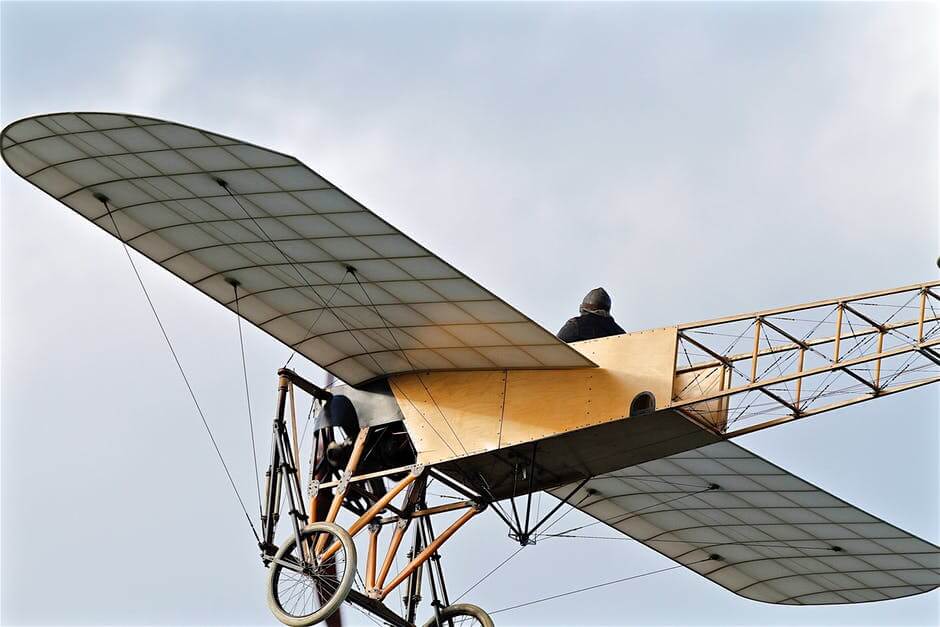The two leadership qualities that will make you or break you
Leaders are clear thinkers: problem solving and decision making
In case you haven’t heard already, we had overwhelmingly positive feedback from our launch seminar of The Complete Leader in the RDS on Monday 8th May. We can’t tell you how excited we are to be bringing this hugely successful programme to Ireland.
In this week’s blog, we’re continuing to write about what our seminar guests told us they care about: problem solving and decision making.
These are two of the leadership characteristics from the ‘Leaders are Clear Thinkers’ section, and are often the making or breaking point of a leader’s credibility.
Let’s start with problem solving.
Essential Leadership Qualities: #1 Problem Solving
Over the course of history, we’ve seen and benefit from the intelligence and innovation of great problem solvers.
Think Thomas Edison and the light bulb, Edward Jenner and the smallpox vaccination and the Wright brothers who designed, built and flew the world’s first airplane.

These are individuals who saw a problem that the world faced and dedicated themselves to solving it. They were able to define, analyse and observe the key components of a problem in order to come up with a solution.
Problem solving is one of the most important leadership qualities that distinguishes great leaders from merely good ones.
As somebody I know once said, ‘all problems come with hair on top’! Problems inevitably crop up when working with and leading other people – and somebody has to take the lead and be able to effectively deal with whatever issues arise.
Our already complex world is set to become even more complicated. Nothing is certain, but one could take a wild guess that future leaders will lead in an increasingly technological world where individuals will work remotely from all corners of the globe.
This brings with it it’s own issues. Effective leaders will need to be able to work collaboratively to overcome obstacles, to work quickly and communicate clearly.
Good problem solving VS poor problem solving
People who are skilled problem solvers use logic to analyse and find solutions to problems. They are able to look at the potential impact of possible solutions on the people around them and they can clearly prioritize what steps need to be taken towards a solution.
Effective problem solvers are patient and clear headed enough to allow for brainstorming and abstract thinking in order to come up with creative solutions.
On the other hand, leaders who are weak at problem solving may not anticipate problems, be too rigid to change strategies or spend an insufficient amount of time deciding on an approach.

How can I improve my problem solving skills?
If problem solving is one of the leadership qualities that you would like to improve, put the following points into action.
Figure out your why
The Complete Leader recommends that before you jump in looking for solutions, you should ask yourself why you’re trying to solve the problem in the first place.
How would solving this problem help the organisation move closer towards its goals? Might this problem be the manifestation of a deeper, underlying issue?
One way to understand the problem is to use the well-known “five whys” process, which was popularized by Toyota. To get beyond the perceived problem, ask “why” five times, or until you get to the root issue.
To help you find a solution, determine whether the problem is a convergent or a divergent problem.
A convergent problem is one that’s easy to define and has little ambiguity around the correct answer, e.g. a maths equation.
A divergent problem, on the other hand, is often difficult to define and there may be no agreement around a solution, e.g. the abortion debate.
Make sure you have a realistic understanding about why the problem needs to be solved in the first place and what type of problem it is.
Avoid making assumptions
Always support data over assumptions. Don’t jump to conclusions about what the problem might be, but instead make sure you speak to as many people who are involved as possible.
Ask lots of questions. How serious is the problem? When did it arise? Who is affected? What would happen if we ignored it? How is this impacting on the people involved?
Gather facts and data about the issue and show respect by listening carefully to whoever is passing on information about the problem.

Diagnose the problem
Once you have sufficient data to figure out the exact cause of the problem, define it clearly so that everybody is in agreement as to what the problem that needs to be solved is.
From here, you are in a better position to seek solutions.
Write down possible solutions and decide on the best option
Consider everybody who is affected by the problem and write down all possible solutions that could be approached.
Ask for input and suggestions from all stakeholders and ensure everybody’s voice is heard.
One useful way to work out a problem is to use the Plan, Do, Check, Act (PDCA) model. The steps are as follows:
Step 1: Plan: Identify and analyse the problem or opportunity, develop hypotheses about what the issues may be, and decide which one to test.
Step 2: Do: Test the potential solution, ideally on a small scale, and measure the results.
Step 3: Check/Study: Study the result, measure effectiveness, and decide whether the hypothesis is supported or not.
Step 4: Act: If the solution was successful, implement it.
Let go of your own self-interest
When solving problems as a leader, it is important to suspend your own need to be right and to have all the answers.
Consider the needs of the group as a whole and which solution will benefit the most shareholders.
If people are in chronic disagreement, help them to work towards a solution by writing down shared values, interests and desired outcomes. This can help others see things from a group perspective and avoid disagreement or conflict.
Essential Leadership Qualities: #2 Decision Making
I’m sure many of you, if you haven’t seen the recent movie, have at least heard the story of Sully and the miracle landing of US Airways Flight 1549 on the Hudson river.
Captain Chesley “Sully” Sullenberger found himself captaining a plane that lost both engines. He had under a minute to decide where to land the plane and how to save the 154 souls on board.
In what many say was a stroke of genius, he judged that his best and safest option was to land the plane on the Hudson River, and saved all 154 people.

Decision making is one of the essential qualities of successful leaders. According to The Complete Leader it can be defined as the process of utilizing effective processes to make decisions.
This skill is important for leaders to develop because, as Ryan Lisk points out, we make hundreds of decisions every day, and each one sets the trend for how the organisation will be run.
Good decision making VS poor decision making
People who are skilled at decision making can make informed choices from a number of different options. They focus on the people around them while deciding on the best course of action.
Similarly to problem solving, decision making is a vital skill for the leaders of tomorrow, as an ambiguous work environment, increased remote working and other changes will create a need to deal with tough decisions while under enormous pressure and time constraints.
Critically, decision making effectiveness depends on how and when a decision was made, not just that it was made.
Poor decisions can negatively impact on morale, trust, engagement and – critically – the bottom line.
Good decisions, on the other hand, can have the opposite effect, leading to a healthier organisation and a healthier bottom line.
How can I improve my decision making skills?
Use the 4 Rs test
Eric J. McNulty notes that in routine decision making scenarios, a leader will have approximately 75% – 80% of required information. In a crisis, however, this figure drops to 50% – 60%.
Once you have as much information as possible, use the 4 Rs test to help you determine the impact of your decision.
- Regret. What will the outcome be if you fail to act or make the wrong choice? What might you regret?
- Repeal. How difficult would it be to change your mind and reverse the decision? Might you need to do this?
- Repercussions. Who will be affected by your decision? If anybody will be negatively impacted, how could you lessen the impact?
- Resilience. How likely is your decision to build resilience within yourself and other stakeholders? Always choose the option that will build the most resilience if possible.
Seek feedback
If decision making is one of the leadership qualities that you would like to work on, it is critical to be open to feedback.
Be willing to hear the good, the bad and the ugly about how your decisions impacted the organisation and the people around you.
If you find feedback tough, start by asking people you trust and who you are close with. Ask questions around what worked and what didn’t work, and write down ideas for how you could improve your decision making performance in future.

Implement the After Action Review (AAR) army tool
Ryan Lisk recommends using the After Action Review (AAR) tool to improve your decision making skills.
Analyse what was supposed to happen, what did actually happen, what could be continued in the future and what could be done differently next time.
This can help you see mistakes that you might have overlooked, and to perform better in future.
Get clear on values
Eric J. McNulty recommends being absolutely clear on organisational and personal values when making decisions.
Make sure they are visible and clearly understood by people in the organisation, and aim to make all decisions with these values in mind.
How will your decisions impact on perception of your organisation’s trustworthiness and brand?
Be wary of decision fatigue
According to the NY Times, when decision fatigue kicks in it can negatively impact your decision making ability during crises.
This occurs when one is mentally depleted from having to make too many small decisions throughout the day.
To counteract this, try to stay in the moment using mindfulness. Make sure you’re getting enough sleep and that you practice good nutrition.
Avoid making critical decisions on an empty stomach or when exhausted.
Trust your gut
In Daniel Goleman’s book “Working with Emotional Intelligence” he discusses a study of 60 highly successful entrepreneurs from companies with revenues ranging from $2 million to $400 million.
In this study 59/60 entrepreneurs spoke about analysing the data and then using their gut instinct to identify if something “felt right”.
Goleman says that the ability to read those subjective currents has its roots in evolution. This capacity, like other aspects of Emotional intelligence, can be developed and grows stronger with experience. Another word for it is simply, wisdom.
Final thoughts…
Problem solving and decision making are two essential leadership qualities which are associated with how leaders are clear thinkers.
If you would like to improve your problem solving skills start by figuring out your why, avoid making assumptions, diagnose the problem, write down possible solutions and let go of self-interest.
If decision making is one of the leadership qualities that you would like to develop, use the 4 Rs test, seek feedback, implement the AAR army tool, get clear on values and be wary of decision fatigue.
Looking for a leadership community that can help? We are the founders of the Complete Leadership Ireland LinkedIn group.
It provides free access to lots of great resources on leadership and provides a forum for discussion with other leaders.
We would also love to invite you to our Complete Leader Ireland Follow-On Webinar. This will be hosted by Ron Price and Padraig Berry and it will be designed to answer your questions on how to take your Leadership to the next level.
What leadership skills do you struggle with and like to hear more about? What areas do you really excel at? We love to hear your feedback.
How Employee Experience Leads to a Highly Productive Workforce
We believe in order to create engagement, employers need to move beyond believing that experience is all about extra benefits at work such as Massages Mondays and Pool Tables. Real employee experience begins with meaningful work. What can your organisation do to create meaningful work for your people? What can you do to make your people feel connected and to feel like they belong and they trust you? Isn’t this what Experience is all about?
DISC vs. MBTI
How does DISC compare to MBTI? This is a common question many people have asked us over the years. There are many different angles to consider, as both tools are used frequently in organizations, but in different ways. In this article, we will answer...
Podcast – Building Authentic Empathy
Recently Padraig spoke with Dale Dixon on the complete leader podcast. Host Dale Dixon interviews Business Coach and Strategist Padraig Berry, who is the CEO of One Focus Business Consultants and TTI Success Insights Ireland. On today's episode, Dale and Padraig...

Discover Your Leadership Style TODAY!
- First step to being a leader is knowing yourself. If you don’t understand yourself how can you understand others? Learn to understand others better.
- Learn what your true behaviours and driving forces are.
- Identify what leadership competencies you are strong in and where you can improve.



